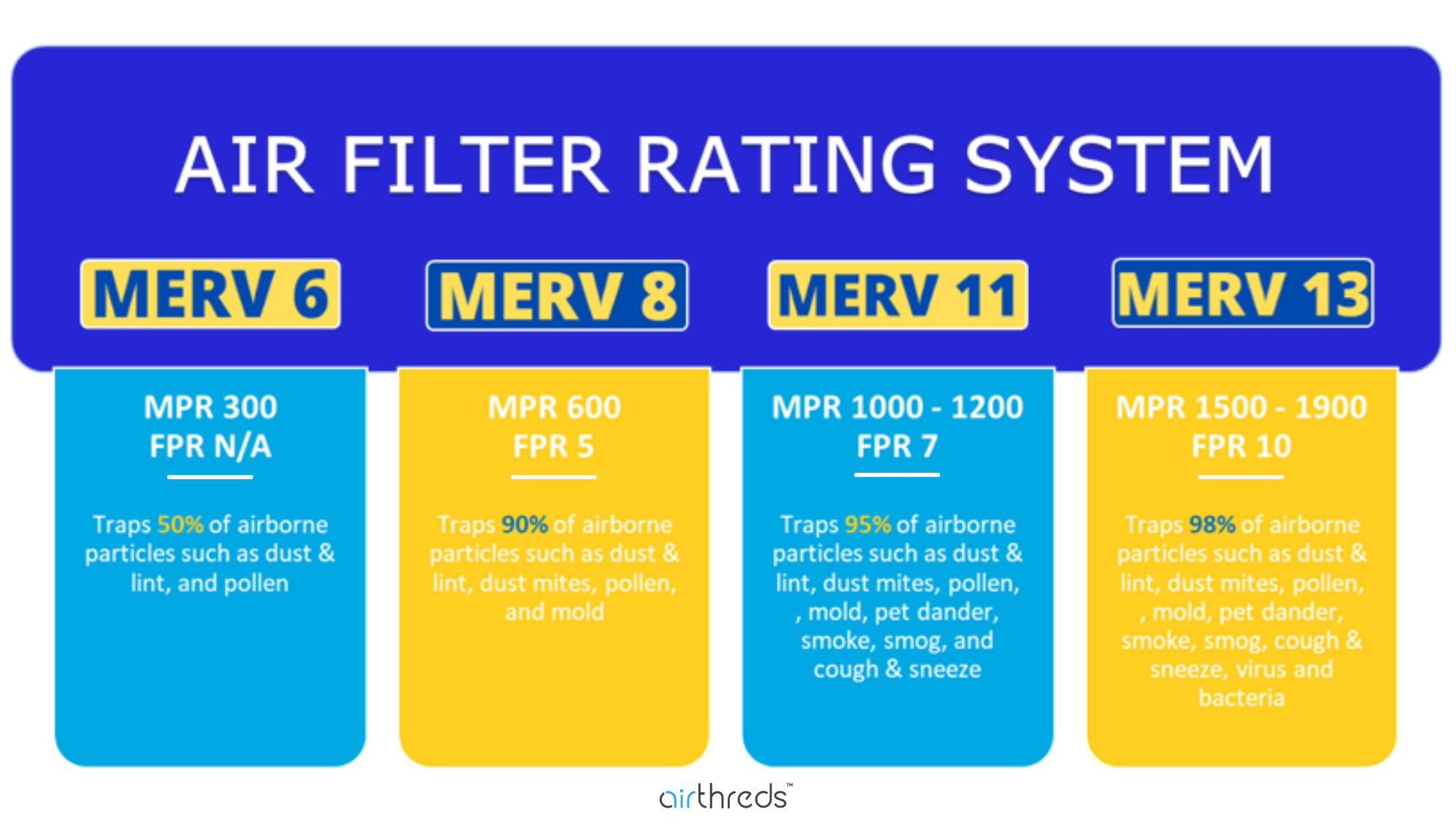MERV Filter Ratings: Which One Should I Use?
Having a compatible air filter is paramount when looking into optimizing your HVAC system’s efficiency. So naturally, when looking for an air filter, the term “MERV” is sure to come up a few times. We’re here to help make sure you understand what a MERV Rating is and how to use the rating system to find the best air filter for your home.
What is a MERV Filter Rating?
The MERV acronym stands for “Minimum Efficiency Reporting Values“. The MERV number is an indicator of the size of particles an air filter is designed to catch. Essentially, the higher the MERV rating, the better the filter is at catching small particles before they enter your home.
What Each MERV Rating Means:
5-7 MERV – A basic filter that is capable of removing larger particles. However, they aren’t the best when it comes to improving the air quality in your home. These filters are the most affordable ones, but they only protect HVAC systems by filtering pollen, dust mites, and larger debris particles. Most homes will require an air filter with a higher MERV Rating.
8-10 MERV – Air filters with an 8-10 MERV rating are great at catching dust lint, mildew spores, and mold, it captures 90% of pollen, dust mites, mold, larger dust particles and helps reduce pet dander in the house.
11-13 MERV – These filters are more efficient and usually offer the best indoor air quality improvement for residential applications. However, with more performance comes more maintenance, so it’s essential to make sure these filters stay clean to avoid hefty repairs.
What MPR and FPR Ratings Mean:
Two other components that are also important to consider when looking at your air filter are the MPR and FPR.
The MPR is your “Microparticle Performance Rating”. The MPR is an air filters effectiveness of capturing particles between 0.3 and 1 micron in size. Essentially, the higher the MPR an air filter is, the more particles it can catch.
A FPR is a “Filter Performance Rating”. FPRs fall on a numerical scale 4-10. The scale is more general than the MERV rating, so it can be considered a great beginner friendly scale to go off of. However, FPR is only used in The Home Depot and the air filters they carry in their stores.
Here is basic breakdown of how MERV, MPR, and FPR ratings work together:

Choosing Your MERV: Which One is Right for You?
Even though MERVs with higher ratings are more efficient, they’re not always the best option! If you have an air filter with a MERV that is too high, you can face complications like overworking your HVAC system as well as restricting airflow.
The recommended MERV range for household air filters is MERV 7 – 13. Most airborne contaminants found in residential homes can be removed with an air filter within these rankings. Anything exceeding MERV 13 is typically found in a hospital environment, where air sanitation is of the highest importance.
Our AirThreds filters are reusable and provide MERV 8 filtration, maximize airflow, yet still maintain efficiency. Additionally, AirThreds captures 90% of pollen, dust mites, mold, larger dust particles and helps reduce pet dander in the house. AirThreds is a great option that is eco-friendly and efficient for people with allergies and pets.

Ultimately, determining which MERV rating you want to look for in your air filter comes down to the individual needs of each household. Most households will see great results with air filters with 7-8 MERV ratings, and these are still affordable options. On the other hand, people who have pets, allergies, or health conditions such as asthma may benefit significantly from getting an air filter with a higher MERV Rating. However, it’s important to remember that as you look at air filters with high MERV ratings, you will be spending more money initially and over time, as they are more energy draining.



